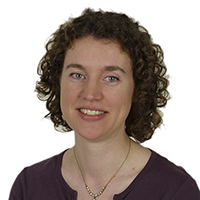Welcome to the fifth issue of Science in School Editorial article

For our feature article, we were lucky enough to speak to Thomas Reiter, an ESA astronaut, shortly after he returned from 177 days on the International Space Station. He told us what it feels like to leave the Earth’s atmosphere, what experiments he carried out in space, and how to become an astronaut.
Also looking to the heavens – this time, as far as the stars – is the third part of our ‘Fusion in the Universe’ series.Paola Rebusco, Henri Boffin and Douglas Pierce-Price examine how heavy elements were formed in the early days of our Universe, and what it was that mediaeval alchemists overlooked. Probing further still into the mysteries of the Universe is dark-matter scientist Jenny List, interviewed by Barbara Warmbein.
Young people sometimes wonder why they need to learn science, or what its use is in ‘real life’; we asked some scientists to help you provide the answers. For a very practical application, Darren Hughes demonstrates how understanding stress lets us build safer railways and more efficient wind turbines. Ben Parker demonstrates the everyday applications of statistics – and what to watch out for in unscrupulous advertisements. Lastly, what could be closer to home than our family? Paul Tafforeau shows how X-ray studies of fossils can tell us where our hominoid ancestors evolved.
Does education always need to be so serious? We think not, especially with the help of Johan Leveau’s Mycomuncher DNA puzzle – a stimulating and entertaining way to learn how scientists discover the DNA sequence of a gene, and find out what the gene is for. You can even build the puzzle yourself. In a similar vein, Caroline Molyneux demonstrates the benefit of playing music in science lessons.
Two important topics in the news – and in the classroom – are climate change and renewable energy. Elisabeth Schepers from the Deutsches Museum in Munich, Germany, describes a school project to allow students to discover the important facts and debate what they can do themselves to protect the environment. One way is of course to use more sustainable materials; David Bradley discusses advances in the manufacture of bioplastics – and our teacher reviewer suggests many uses for the article in the classroom.
Several of the articles in this issue relate to developments in the UK – an experimental new curriculum (Twenty First Century Science); an ambitious network of Science Learning Centres for teachers; and INSPIRE, a programme to combine post-doctoral research with school teaching. We selected these as stimulating examples of developments in European science education, but we are convinced that similarly impressive ideas are being developed elsewhere in Europe. Please write and tell us about fundamentally new curricula, innovative teaching-training programmes or other large-scale changes to science education in your countries. Did they work well? Why? Why not? We would be interested to hear both the teachers’ and policy makers’ perspectives.
There are plenty of other opportunities for teachers and pupils to get involved. The charity Sense about Science is looking for teachers to test their classroom resource on peer review. Meanwhile, Diana Schimke is busy linking schoolgirls with professional female scientists through the CyberMentor programme. Isabel Plantier describes some of her fun classroom projects, and her ideal space project – if you share her dream, you can help make it reality.
In our recent events section are the results of the Catch a Star! competition which some of you entered, and a report on WONDERS, the spectacular Carousel of Science. If you missed these events, you can join in next year – or take a look at our list of other forthcoming European events in science education.
Finally, we would be delighted to hear your feedback about Science in School. Let us know what you like about the journal, what could be improved, and which are your favourite articles. Send us an email at editor@scienceinschool.org





